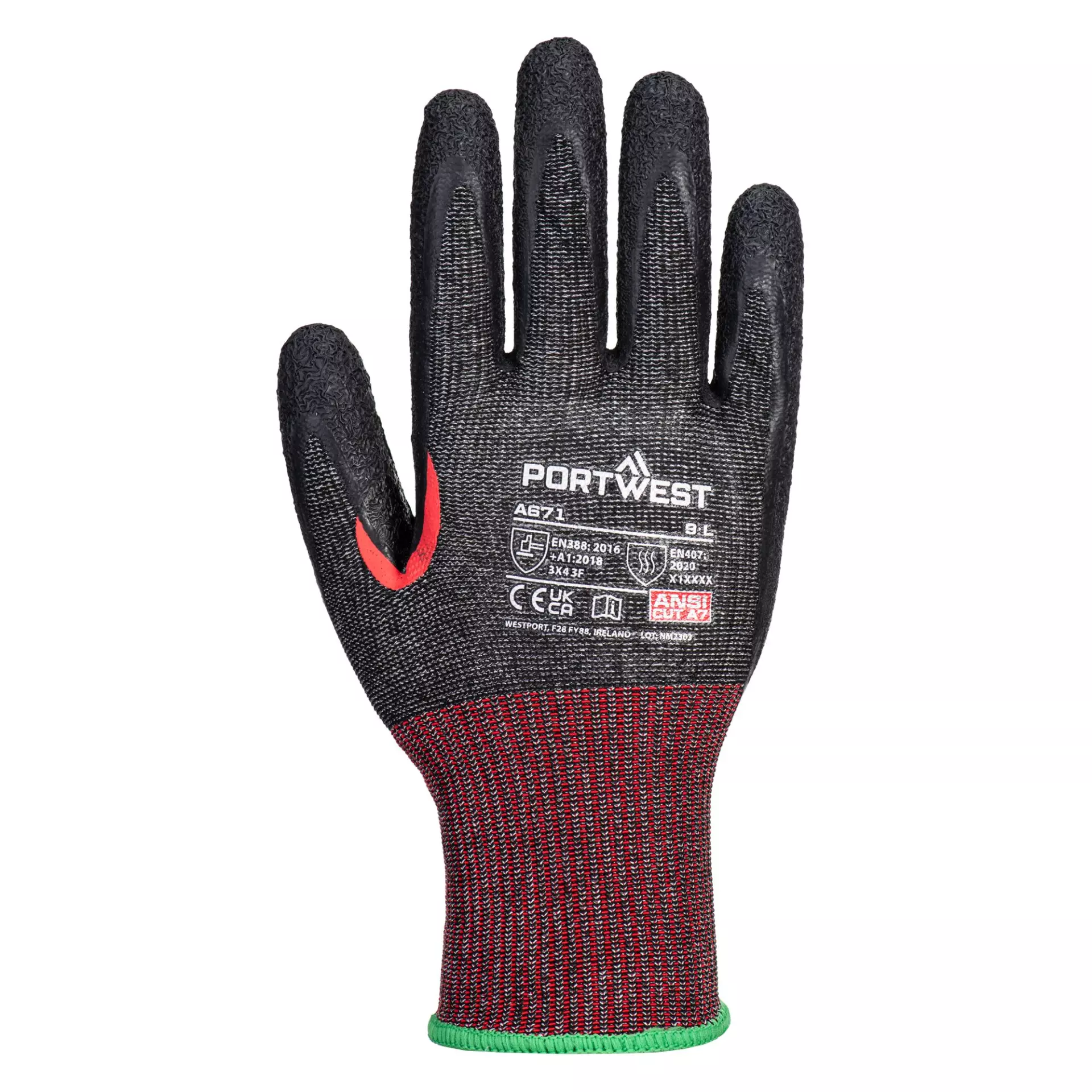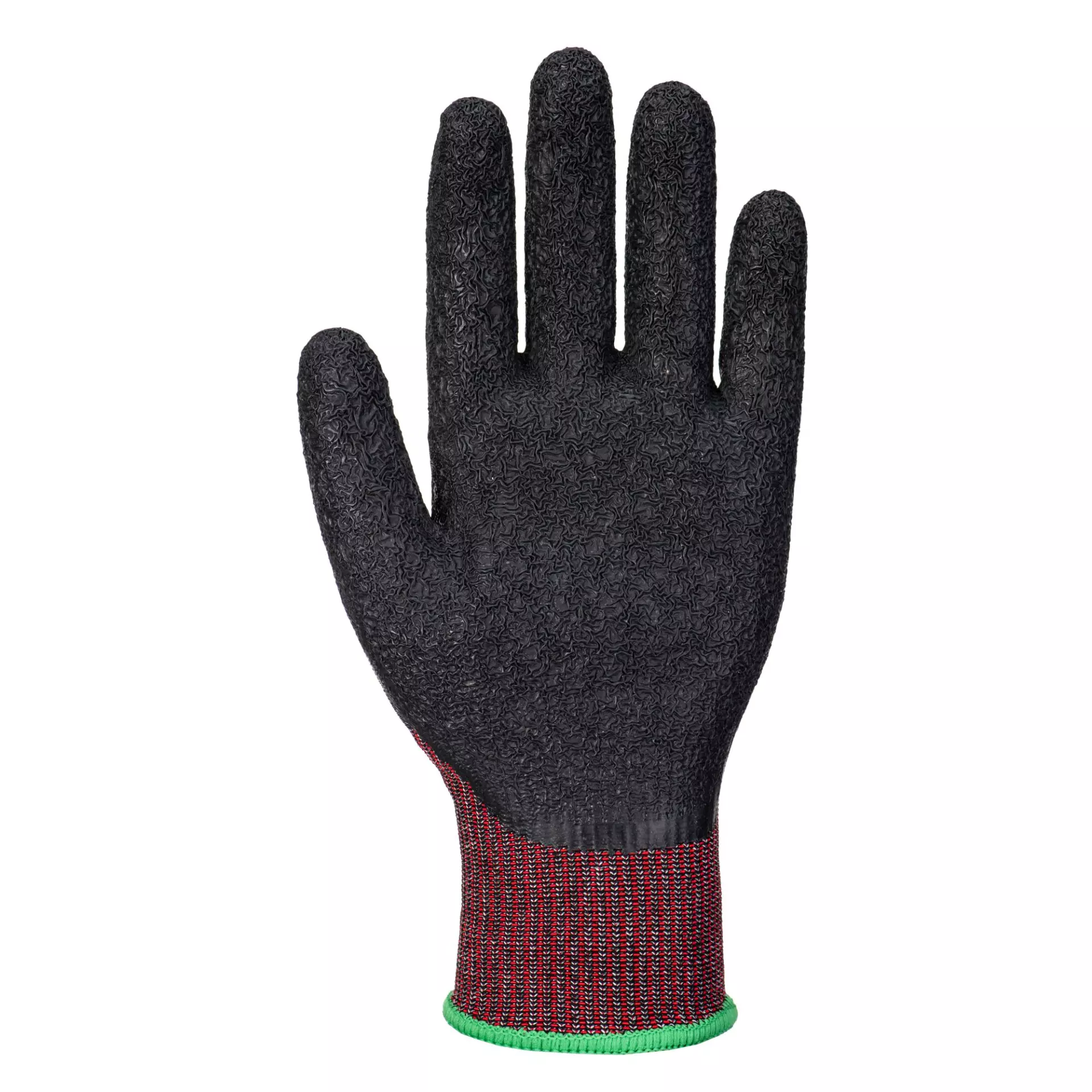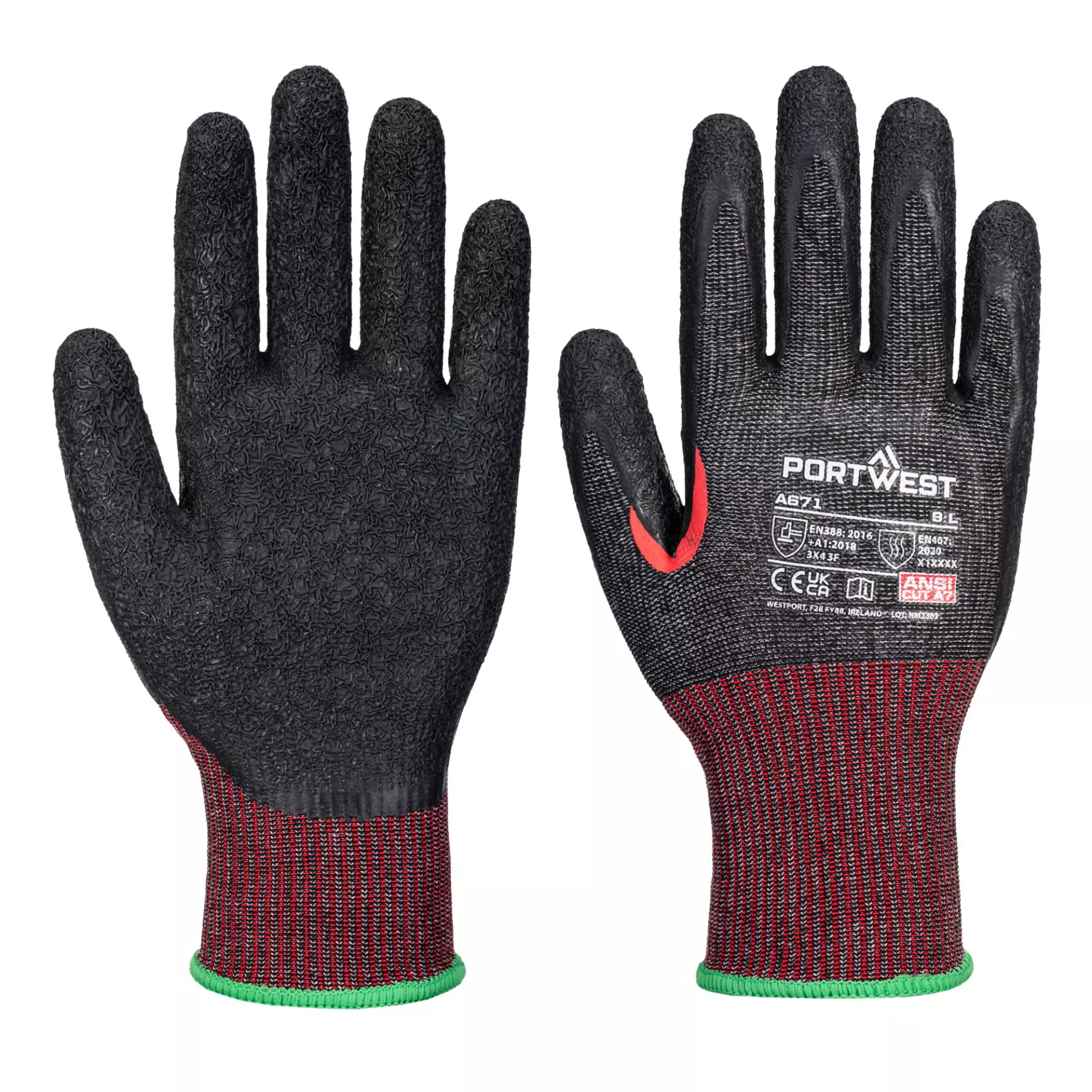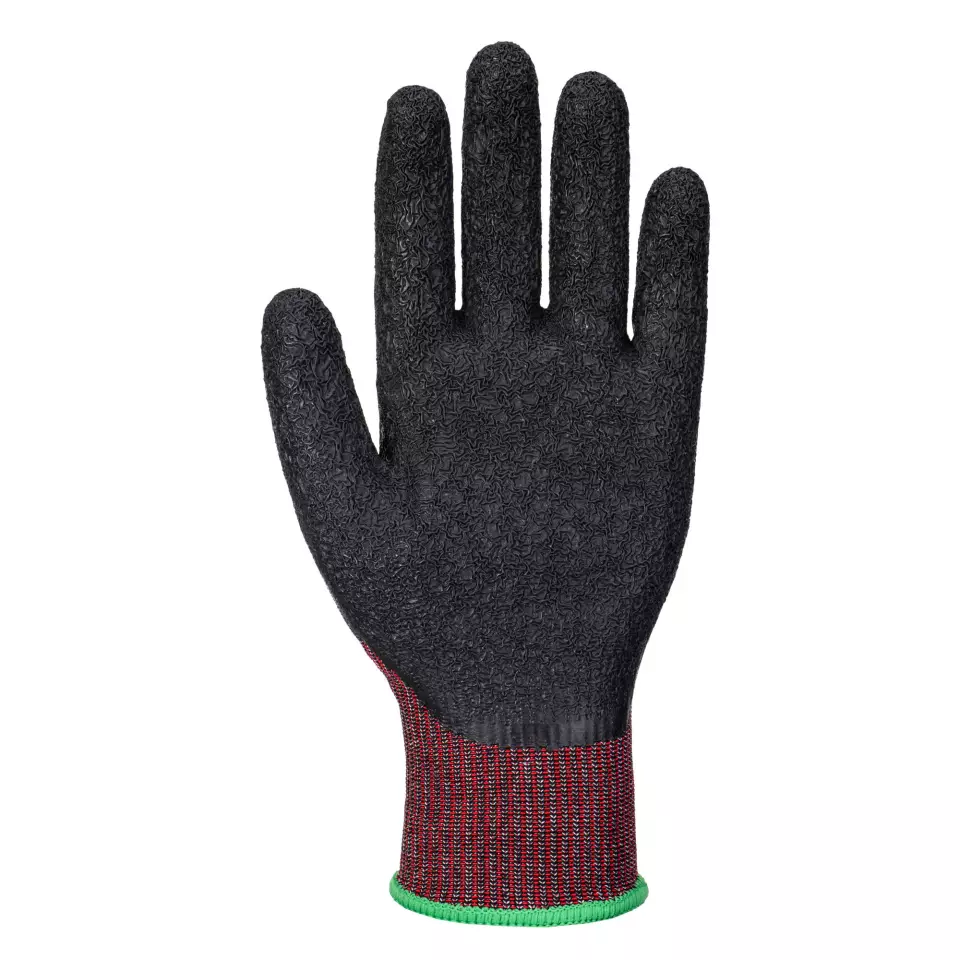


Features You'll Love

Coating Material · Latex
The substance applied to glove surfaces to enhance grip, durability, and protection, with different materials suited for various work conditions.

Support · Reinforced Thumb Crotch
EN 388 · Cut Resistance, ISO 13997 Level F, Tear Resistance Level 4
EN 407 · Heat Contact Level 1
Identifies areas of the glove with additional reinforcement for enhanced protection and durability in high-wear zones.
Provides the highest certified protection against cuts from straight blades under extreme force.
Offers the highest level of protection against tearing, withstanding a strong force before ripping.
Provides protection when briefly touching hot objects. Certified for contact with surfaces up to 100°C for at least 15 seconds, offering short-term protection against burns from items like hot cookware or machinery parts.
Portwest
CS Cut F13 Latex Glove, Black, 12 pairs
CS Cut F13 Latex Glove, Black, 12 pairs
5 / 5
102,17 €
Price per 12 pairs
8,51 € / pair
Choose size
Free delivery
Features You'll Love

Coating Material · Latex
The substance applied to glove surfaces to enhance grip, durability, and protection, with different materials suited for various work conditions.

Support · Reinforced Thumb Crotch
EN 388 · Cut Resistance, ISO 13997 Level F, Tear Resistance Level 4
EN 407 · Heat Contact Level 1
Identifies areas of the glove with additional reinforcement for enhanced protection and durability in high-wear zones.
Provides the highest certified protection against cuts from straight blades under extreme force.
Offers the highest level of protection against tearing, withstanding a strong force before ripping.
Provides protection when briefly touching hot objects. Certified for contact with surfaces up to 100°C for at least 15 seconds, offering short-term protection against burns from items like hot cookware or machinery parts.
Product description
Professional cut-resistant gloves featuring Level F cut protection and latex palm coating for superior grip performance. The 13-gauge breathable liner construction provides excellent dexterity while maintaining durability, with reinforced thumb crotch for enhanced protection. These gloves offer contact heat protection up to 100°C and include reflective labeling for improved visibility in low-light conditions.
Product Features:
- Level F cut resistance for maximum protection
- Crinkle latex palm coating for exceptional grip in wet and dry conditions
- Reflective label for improved visibility in low light conditions
- Reinforced thumb crotch for extra protection and durability
- Breathable seamless 13-gauge liner for excellent fit and dexterity
Technical Details:
- Protection against contact heat up to 100°C
- CE certified and UKCA marked
- Protects from glass, blades and abrasions
- Superior strength and comfort design
Standards:
- EN ISO 21420: 2020 Dexterity 5
- EN 388: 2016 + A1: 2018 (3X43F)
- EN 407: 2020 (X1XXXX)
- ANSI/ISEA 105: 2016 CUT Level (A7)
- ANSI/ISEA 105: 2016 ABRASION Level (4)
- ANSI/ISEA 105: 2016 PUNCTURE Level (3)